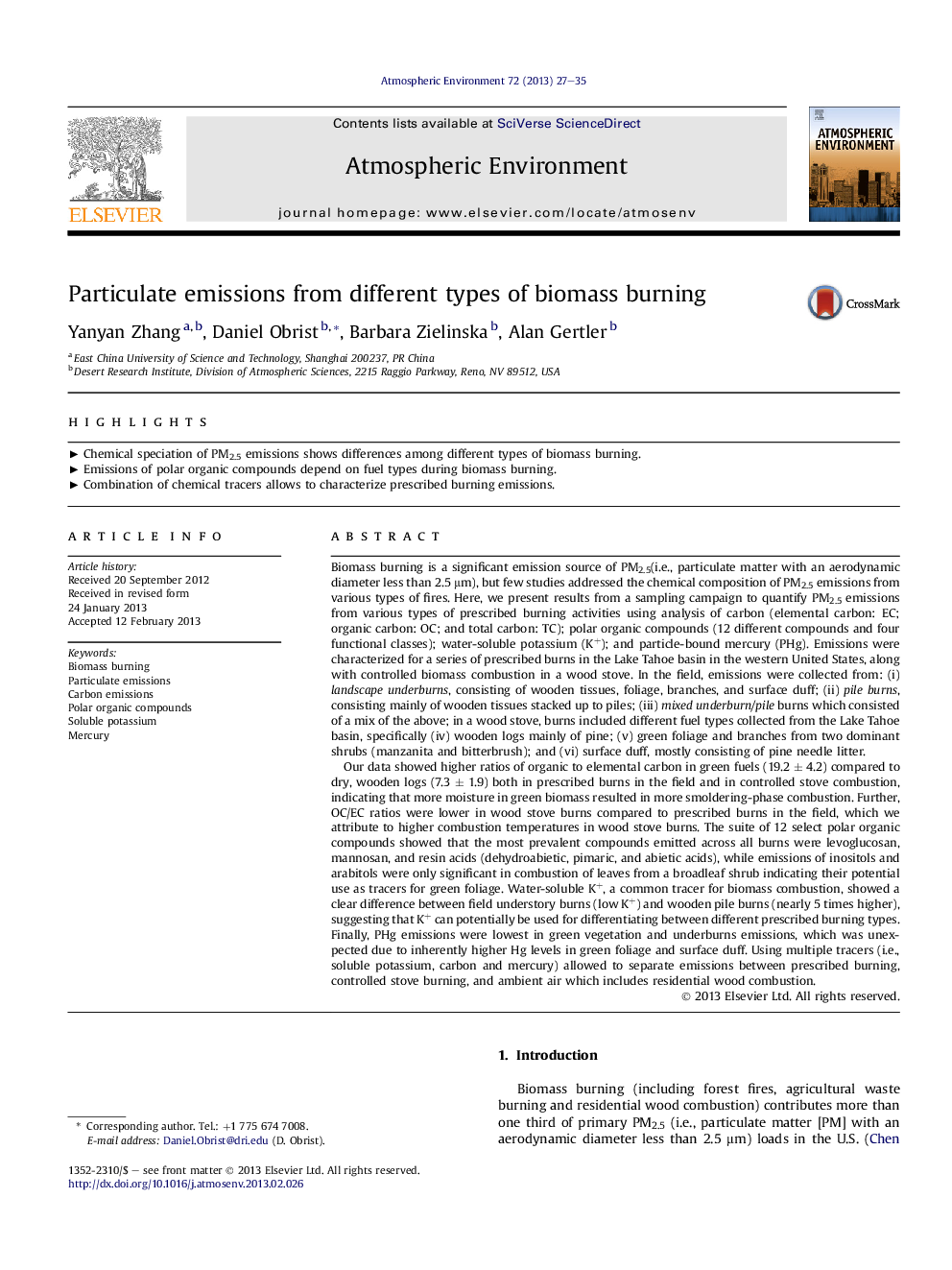| کد مقاله | کد نشریه | سال انتشار | مقاله انگلیسی | نسخه تمام متن |
|---|---|---|---|---|
| 4438330 | 1620399 | 2013 | 9 صفحه PDF | دانلود رایگان |

Biomass burning is a significant emission source of PM2.5(i.e., particulate matter with an aerodynamic diameter less than 2.5 μm), but few studies addressed the chemical composition of PM2.5 emissions from various types of fires. Here, we present results from a sampling campaign to quantify PM2.5 emissions from various types of prescribed burning activities using analysis of carbon (elemental carbon: EC; organic carbon: OC; and total carbon: TC); polar organic compounds (12 different compounds and four functional classes); water-soluble potassium (K+); and particle-bound mercury (PHg). Emissions were characterized for a series of prescribed burns in the Lake Tahoe basin in the western United States, along with controlled biomass combustion in a wood stove. In the field, emissions were collected from: (i) landscape underburns, consisting of wooden tissues, foliage, branches, and surface duff; (ii) pile burns, consisting mainly of wooden tissues stacked up to piles; (iii) mixed underburn/pile burns which consisted of a mix of the above; in a wood stove, burns included different fuel types collected from the Lake Tahoe basin, specifically (iv) wooden logs mainly of pine; (v) green foliage and branches from two dominant shrubs (manzanita and bitterbrush); and (vi) surface duff, mostly consisting of pine needle litter.Our data showed higher ratios of organic to elemental carbon in green fuels (19.2 ± 4.2) compared to dry, wooden logs (7.3 ± 1.9) both in prescribed burns in the field and in controlled stove combustion, indicating that more moisture in green biomass resulted in more smoldering-phase combustion. Further, OC/EC ratios were lower in wood stove burns compared to prescribed burns in the field, which we attribute to higher combustion temperatures in wood stove burns. The suite of 12 select polar organic compounds showed that the most prevalent compounds emitted across all burns were levoglucosan, mannosan, and resin acids (dehydroabietic, pimaric, and abietic acids), while emissions of inositols and arabitols were only significant in combustion of leaves from a broadleaf shrub indicating their potential use as tracers for green foliage. Water-soluble K+, a common tracer for biomass combustion, showed a clear difference between field understory burns (low K+) and wooden pile burns (nearly 5 times higher), suggesting that K+ can potentially be used for differentiating between different prescribed burning types. Finally, PHg emissions were lowest in green vegetation and underburns emissions, which was unexpected due to inherently higher Hg levels in green foliage and surface duff. Using multiple tracers (i.e., soluble potassium, carbon and mercury) allowed to separate emissions between prescribed burning, controlled stove burning, and ambient air which includes residential wood combustion.
► Chemical speciation of PM2.5 emissions shows differences among different types of biomass burning.
► Emissions of polar organic compounds depend on fuel types during biomass burning.
► Combination of chemical tracers allows to characterize prescribed burning emissions.
Journal: Atmospheric Environment - Volume 72, June 2013, Pages 27–35